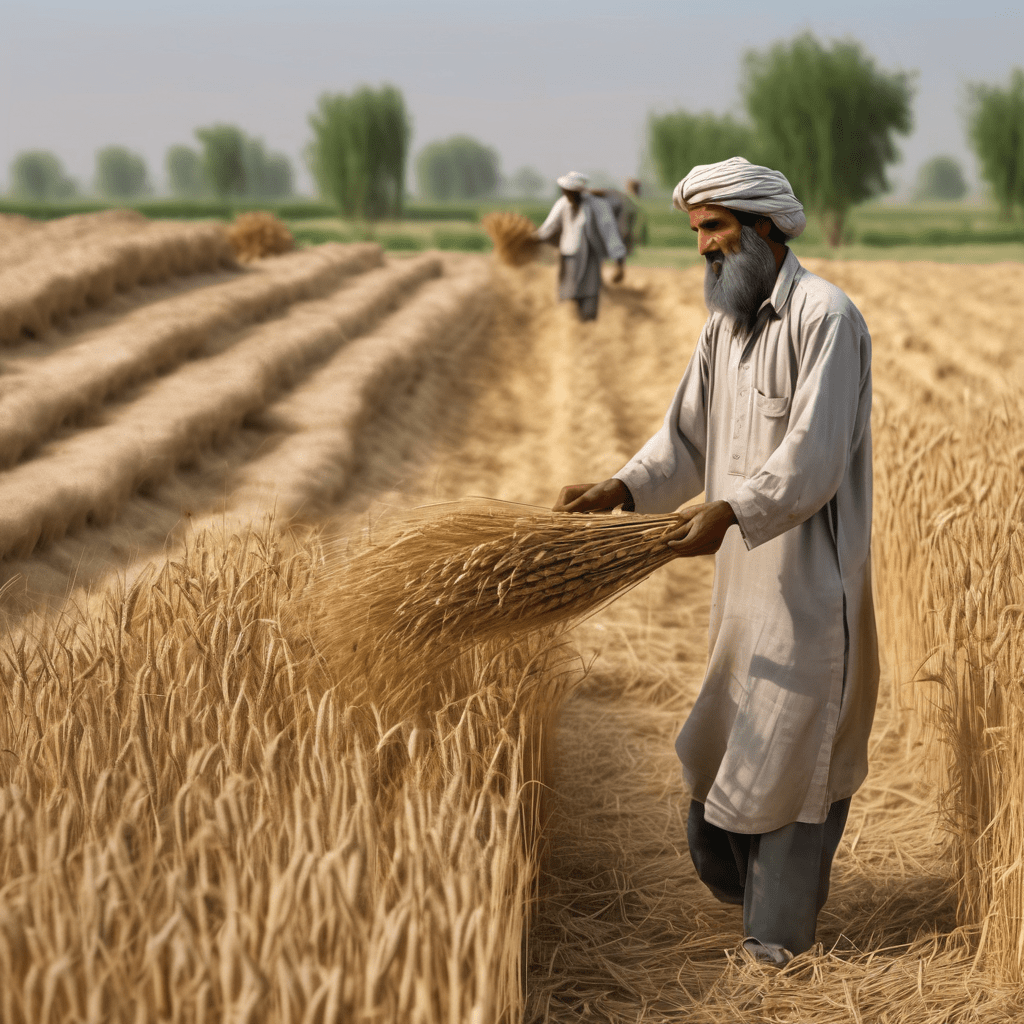Introduction to Pakistan’s Agricultural Potential
Pakistan has a diverse agricultural sector that employs over 40% of the national workforce and accounts for around 20% of GDP. As the fourth most populous country in the world with a growing population, agriculture plays a vital role in Pakistan’s economy and food security. This comprehensive guide explores the current state of Pakistan`s agricultural potential , opportunities for improvement, and strategies for farmers, entrepreneurs and policymakers to unlock the its full potential.
Cropping patterns and major crops
Pakistan has a varied climate that allows the cultivation of a wide range of crops across different geographic regions. Some of the most important cultivated crops in the country includes:
- Wheat – The largest crop by area harvested which supports subsistence farming in the northern areas. Variable climatic conditions and lack of high-yield varieties limit productivity.
- Rice – Mostly grown in Sindh province, rice varieties range from irrigated Basmati to rain-fed varieties. Water scarcity in recent years has threatened production.
- Sugarcane – Cultivated across irrigated areas in Punjab and Sindh provinces. Insufficient research impedes efforts to boost yields.
- Cotton – A major cash crop that faces pest infestation challenges. New Bt cotton seeds developed in collaboration with Chinese companies show promise.
- Maize – Considered a strategic crop and the main staple food in rural Balochistan. More needs to be done to scale up production.
Key challenges faced for Pakistan’s Agricultural Potential
Pakistan possesses vast agricultural potential; nevertheless, certain challenges currently impede the sector’s growth and efficiency. Despite this, strategic interventions and targeted reforms can mitigate these obstacles and unlock the agricultural potential.:
- Water scarcity – Limited water resources are under strain from a growing population and climate change impacts like droughts. Frequent disputes with India over shared river waters exacerbate issues.
- Sub-dividing land holdings – Fragmentation of farmland due to inheritance practices has led to small, unviable land parcels that are less productive. Consequently, this fragmentation undermines the efficiency of agricultural operations and exacerbates challenges in implementing modern farming techniques.
- Lack of infrastructure – Insufficient irrigation networks, roads, storage facilities, and market connectivity hamper the movement of produce and inputs.
- Underdeveloped seed sector – Low investment in seed research and quality control has restricted yield growth potential. Moreover, private sector interest is rising, but more investment and involvement are recommended to bolster innovation and enhance seed quality standards.
- Climate risks – Floods, droughts and other extreme weather disrupt agricultural activities and threaten livelihoods. Adaptation needs scaled support.
Opportunities and solutions
By addressing its challenges constructively, Pakistan’s agriculture sector holds massive scope for contributing further to the overall economy and job market. Specifically, taking on difficulties in a pragmatic manner opens up possibilities for expanded contributions. Accordingly, dealing with constraints constructively will allow the sector to maximize its potential. Some actions that could unlock this potential include:
- Precision irrigation techniques – Drip irrigation, laser land levelling and water harvesting help optimize limited supplies.
- Mechanization and farm technology – Use of machinery, drones and soil sensors can boost efficiency and resource management.
- Support for cooperatives and contract farming – Strengthening of farmer groups facilitates supply chain linkages and market access.
- Value addition and exports – Expanding food processing industries and export basket diversification boosts farmer revenues.
- Private sector partnerships – Collaborations between multinationals, local entrepreneurs and growers transfers know-how and new varieties.
- Climate-resilient practices – Drought-tolerant varieties, conservation agriculture and crop insurance protect against climate shocks.
- Reforming subsidies – Rationalizing input subsidies based on need and shifting to direct cash transfers incentivizes sustainable practices.
- Leveraging youth potential – Jobs are created by agriculture startups and modernizing the sector attracts younger generations.

Conclusion:
With persistent challenges and vast untapped potential, agriculture is key to both Pakistan’s economic progress and national food security for decades to come. Furthermore, by addressing constraints while nurturing opportunities, the sector is well-placed to achieve sustainable growth. Consequently, with concerted efforts to capitalize on opportunities, agriculture stands to make even greater contributions to Pakistan. Despite the numerous obstacles facing the sector, solutions exist that can propel it forward if appropriately supported. Therefore, a dual approach of tackling challenges in tandem with unlocking potential seems most viable for effecting positive change. In this way, agriculture in Pakistan has both the need and possibility of realizing its full significance.


